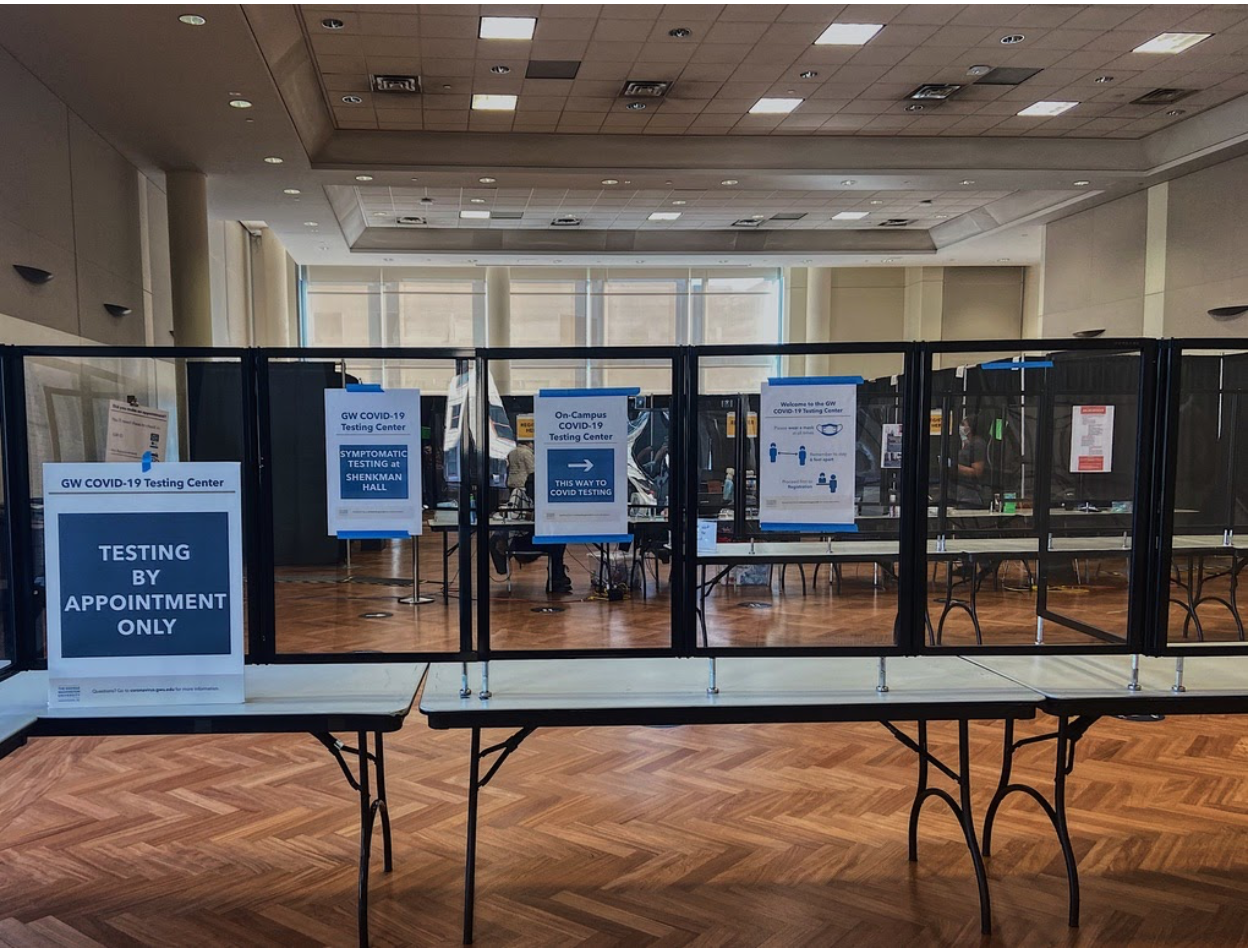By Claire Leibowitz
While schools around the country offer hotels to contact-traced and COVID-positive students, GW’s only instruction for dorm residents is to not leave their rooms under any circumstances.
When someone tests positive, their health badge on the portal immediately changes from Cleared to Isolation. The school will call them, beginning the contact tracing process. Anyone exposed to the positive individual will have a health status of Quarantine. The difference is in Quarantine, you can leave to access Grubhub and deliveries.
Exposed and positive individuals will receive several calls and emails from the GW Health Department, the D.C. Contact Tracing Department, and GW CARE. Those who test positive can be released ten days after they first showed symptoms.
For positive cases, the GW CARE assigns someone to answer questions, retrieve essential packages, coordinate laundry and groceries, and offer other assistance.
Those in quarantine test five days after exposure, and if that comes back negative and they have no symptoms on day eight, they can email the COVID Support Team to be released. If students don’t test, they will be released after ten days.
I spoke to some on-campus students on this matter, many of whom seem dissatisfied by GW’s treatment of COVID-19 on campus.
“I feel like the failure was the lack of information,” said Madeline Thomas, a freshman living in Potomac. Thomas was exposed, received a false negative test, continued to quarantine, and got a positive test a few days later.
Thomas’ suitemate was home when Thomas was exposed, so she decided to only return when it was safe. Thomas said, “if I was with my roommate still, I could’ve easily exposed her, and nobody would have cared. They just throw quarantine at everyone instead of moving us somewhere new.”
Thomas had the virus the same time as Big-Little Week for her sorority. For meals, her big and friends would drop off baskets of goodies, breakfasts and dinners. Her friends would also go to Whole Foods and bring the bags to her door. Potomac’s lack of kitchens inside of rooms made the experience difficult.
Kylie McCarthy, another freshman in Potomac, utilized the Safeway grocery delivery system. “I had to rely on myself. I couldn’t go downstairs to get Grubhub or anything,” McCarthy said.
McCarthy also explained that she and her suitemate wiped down the bathroom after using. Neither resident was offered another place to stay.
Overall, McCarthy wished for more clarity: “I wanted to be in the know a little bit more.”
Olivia Eskenazi is a freshman who lives in South Hall. She moved in on January 30th, received one negative test, two inconclusive tests, and a final positive test. Eskenazi was asymptomatic. “The quarantine was straightforward for me, but not for my suitemates,” she said. “They kept hearing different things, and it got complicated.”
Luckily, South Hall dorms have kitchens, so Eskenazi would coordinate times with her suitemates where she could use the kitchen with a mask, wipe down the surfaces, and run back to her room.
She also mentioned that the school tracks GWorld taps: “they said that if they saw my tap, they would have a video conference to confront it.” This is how they monitored those in Isolation.
Overall, Eskenazi feels there was not enough clarity from the university. She felt overwhelmed with two hours worth of calls the night she tested positive. “It was a lot to take in, and I feel like there are better ways to go about it.”
Overall, all students should keep items that they may need if they contract the virus: over the counter medicines, electrolyte drinks, simple foods, and other necessities.
With cases rising, no matter where you are, it’s best to be prepared, limit your social circle, wear a mask, and practice social distancing.

